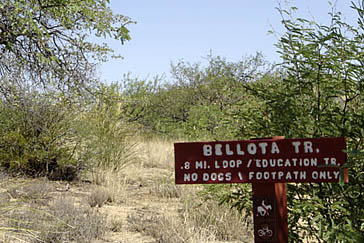[Source; Ginger Rough, the Arizona Republic] –The Tonto Natural Bridge State Park, with its spectacular views and dramatic sight lines, routinely draws more than 60,000 tourists every year. But most of those visitors only stay a few hours. Now, Arizona State Parks is hoping to change that – possibly by partnering with a private firm to operate a small hotel or a restaurant at the Payson-area site. “The lodge that is up there has never really been open to the public – it’s a potential asset that has never been used,” said Jay Ziemann, assistant director of Arizona State Parks. “But there’s a lot of potential to broaden the market to those that might like to come up, visit and stay there.”
Tonto Natural Bridge, about 14 miles northwest of Payson, is one of the state’s newer parks, added to the system in 1990. At its heart is the bridge, believed to be the largest natural travertine trestle in the world. It stands 183 feet high over a 400-foot long tunnel that measures 150 feet at its widest point. Tourists come to the park to camp, hike and explore the area’s trails and waterfall. But facilities at the site are somewhat limited and include only a gift shop, some picnic-table areas and a few portable restrooms.
The park’s historic Tonto Lodge was built in the 1920s. The state purchased it along with the park and has just finished bringing it up to code – installing fire-suppression systems and making sure it has adequate sewer and drinking-water systems. The lodge features 10 upstairs bedrooms and two and a half bathrooms.
The state, which has limited money and manpower, is hoping the private sector will give it guidance on how to structure a formal partnership agreement that might ultimately result in the lodge being opened to the public. Last month, the parks department had a meeting with potential partners, and they have now put out a formal “request for information.” It’s a slightly unusual step. Arizona State Parks is hoping that by asking the private sector what they might be interested in doing, they can structure a better request for a proposal that will ultimately result in a solid plan and successful partnership. Ziemann said the state is hoping to get information back from private operators before the end of this month.
Parks officials will then issue a formal request for proposals based on the feedback they receive. “We’ve offered (requests for proposals) in the past, and we haven’t gotten very much in the way of responses,” he said. “We are hoping that if we find out exactly what they might be interested in bidding on, we’ll have better luck.” Options could include building individual cabins with private baths to expand the lodge’s capacity and make it more attractive for overnight guests, as well as running a small cafe at the main property. Recent visitor surveys by the parks department found that 57 percent of people touring the park said they would be interested in using a restaurant or a snack bar.
Arizona State Parks has increasingly turned to public-private partnerships to keep its network of 30 parks open in the wake of years of budget cuts. Tonto Natural Bridge is no exception. A wide range of community partners – including Friends of Tonto Natural Bridge State Park, the city of Payson and the town of Star Valley – raised money through bake sales and other similar means last year to give State Parks more than $10,000 in operating funds for the site.
The park is a critical part of the local economy, said John Stanton, vice president of Friends of Tonto Natural Bridge State Park. The most recent study available, by the Arizona Hospitality Research & Resource Center at Northern Arizona University, found that the park had a $3.56 million economic impact in fiscal 2007. “Financially, up here, we are driven by tourism,” he said.
Derek Shreiner, president of Friends of Tonto Natural Bridge, said his organization welcomes any efforts to enhance the Lodge’s operations – especially if it keeps visitors in the park longer. “For as long as I’ve been involved, it’s been day use only,” Shreiner said. “It’s significant to us. I think there’s a lot of opportunity there.”

